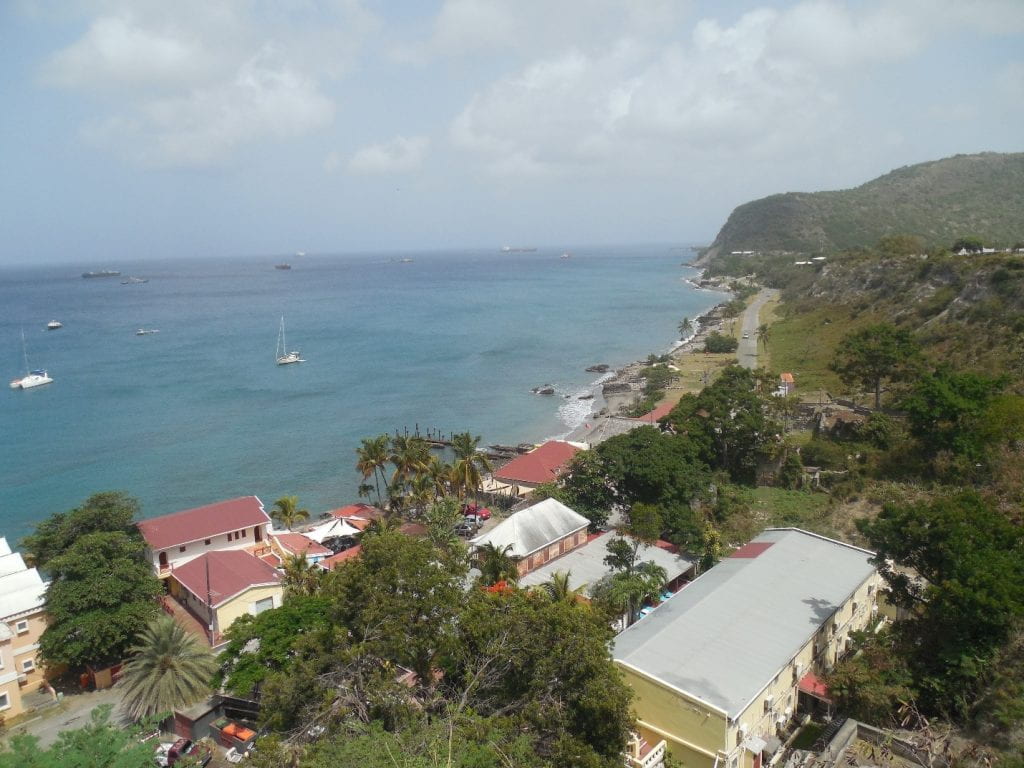By Kaylee Gaumnitz
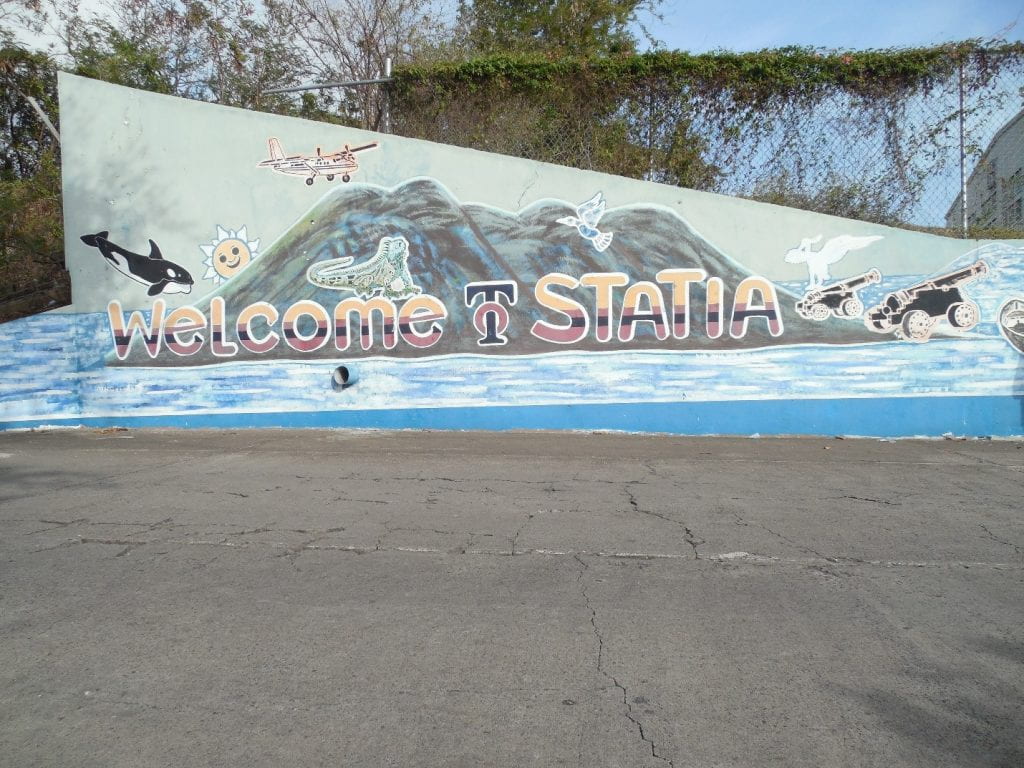
An Inviting Mural to Statia
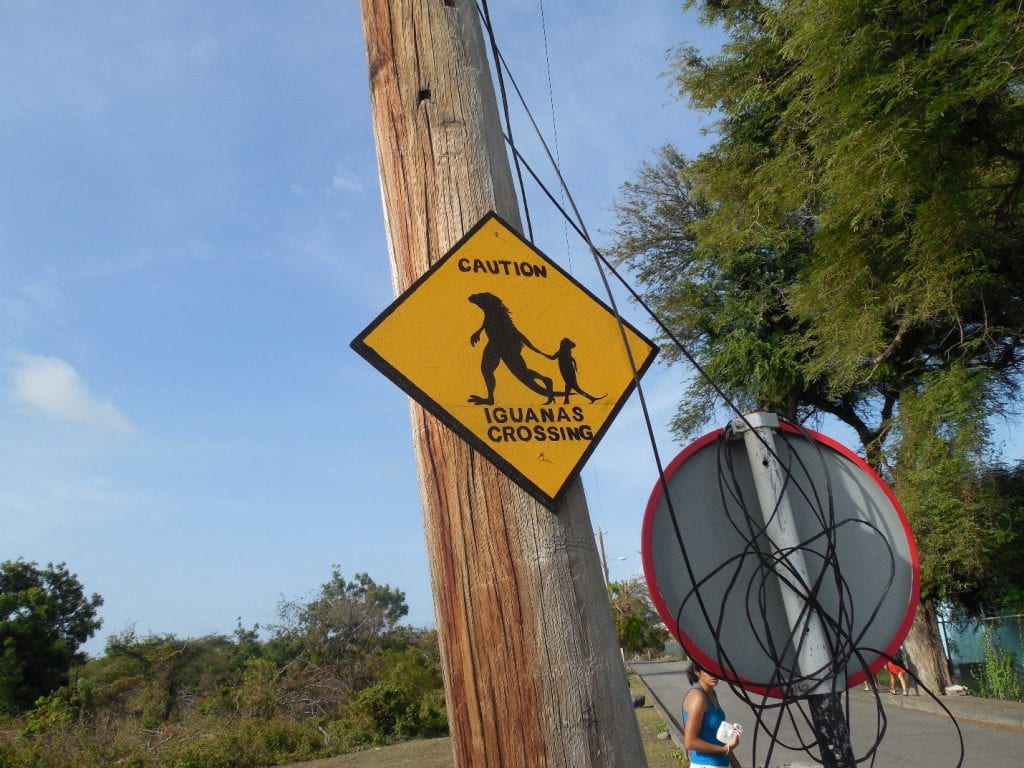
Statia is home to the endangered Lesser Antillean Iguana. A sign reminding people that iguanas have the right of way.
Despite what pop songs say, the strongest feelings aren’t felt in the heart or the head; they come from the stomach. My stomach always tells me how I’m feeling. Usually I’m hungry. During the spring and summer of 2018 my stomach had a lot to say about how I was feeling. In early April, I woke up to my roommate Lauren’s iPhone alarm. Normally, I roll over and drift back to sleep, but that day I checked my phone for texts, emails, rapture notices, or anything interesting. Glancing at my phone, I got an email starting with “Congratulations” from Dr. Ahlman. As I read the email detailing my internship, it became a dream I kept waiting to wake up from. Until I stepped foot on Statia alive, I kept considering if I had been mistakenly emailed or if I were being kidnapped. For the rest of the day, I couldn’t focus on William Faulkner in American Literature II, Vietnamese phonemes in Linguistics, or any of my regular coursework. From the second I read that email, my day became a smudge in my memory. I was physically on campus, but mentally already on Statia.
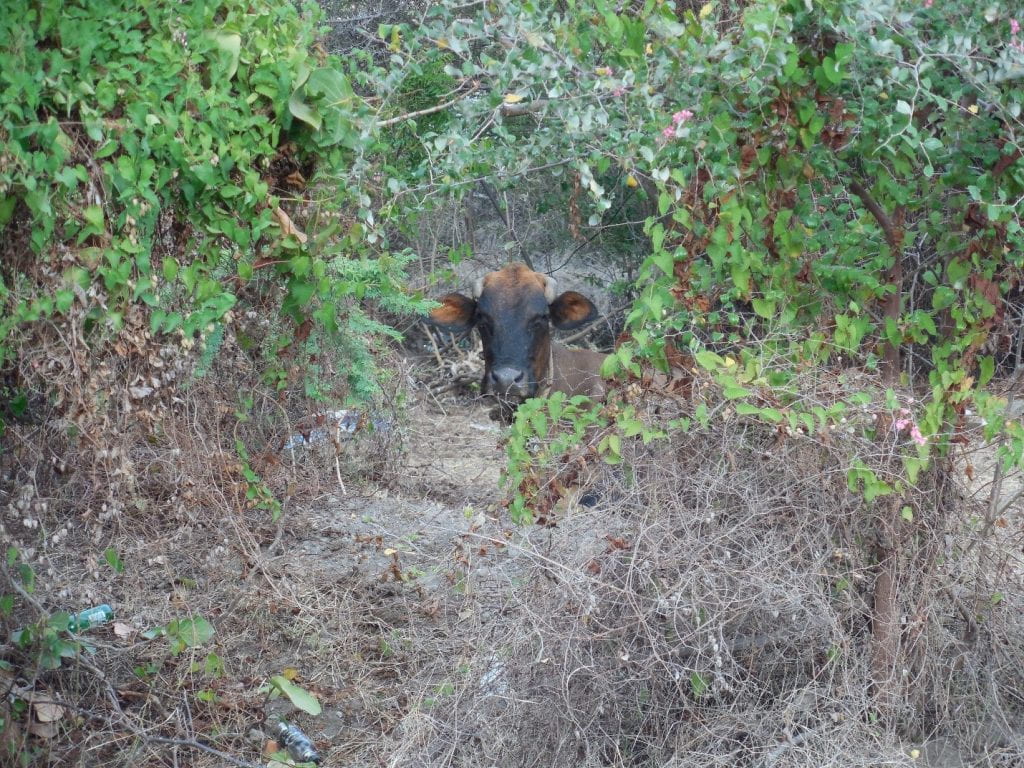
Here is one of the many random animals roaming about Statia.
As a twenty-one year-old double major in English and anthropology with a minor in French, I have not had much life or professional experience. However, the National Science Foundation, Statia, Texas State University, and all the wonderful people I’ve met helped me gain a bit of both while helping me confirm that I want to pursue archeology in graduate school. Originally, I saw the field school listing on Facebook because one of my professors shared it with our Anthropology club’s Facebook page. Since my professional work is limited to volunteering in my school’s archaeology lab, applying for something with field work, lab analysis, research presentations, and only ten acceptance seats seemed daunting. However, my roommate convinced me to apply and at least get comfortable asking my professors for recommendation letters. I jumped through the paperwork hoops and sent my application off to be denied. To my disbelief, I got accepted and flew out June 11.
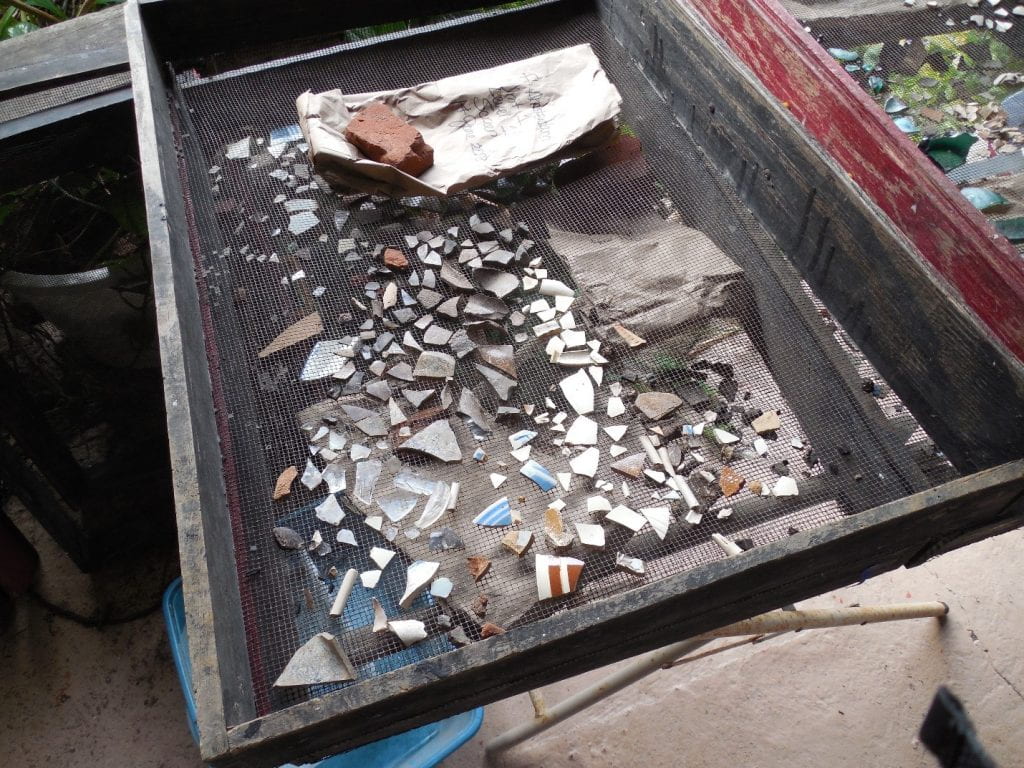
This image shows a drying rack displaying freshly cleaned artifacts.
I love airports and traveling, however, after an entire day of fastening my seatbelt, nibbling on pretzel packets, and familiarizing myself with emergency exits, my stomach knotted on the last plane trip from St. Maarten to Statia. I had not come this far to die in the Caribbean Sea on the last plane. With stormy weather, our puddle jumper plane was bouncing more than the plane pretzels in my stomach. We landed on Statia late at night in one piece and the work began. Our first job was feeding ourselves so we drove to a Chinese restaurant that would quickly become my favorite place to eat on the island. Following dinner, we groggily mosied to our living quarters at the Caribbean Netherlands Institute for Science (CNSI). Even though the toilet leaked and the beds squeaked, it was home complete with two stray dogs with neglectful owners and at least a few stray cats all affectionately named Mark except for one which I dubbed Cheese Puff. Beyond our beds, our second home, the worksite, was a five minute drive from CNSI.
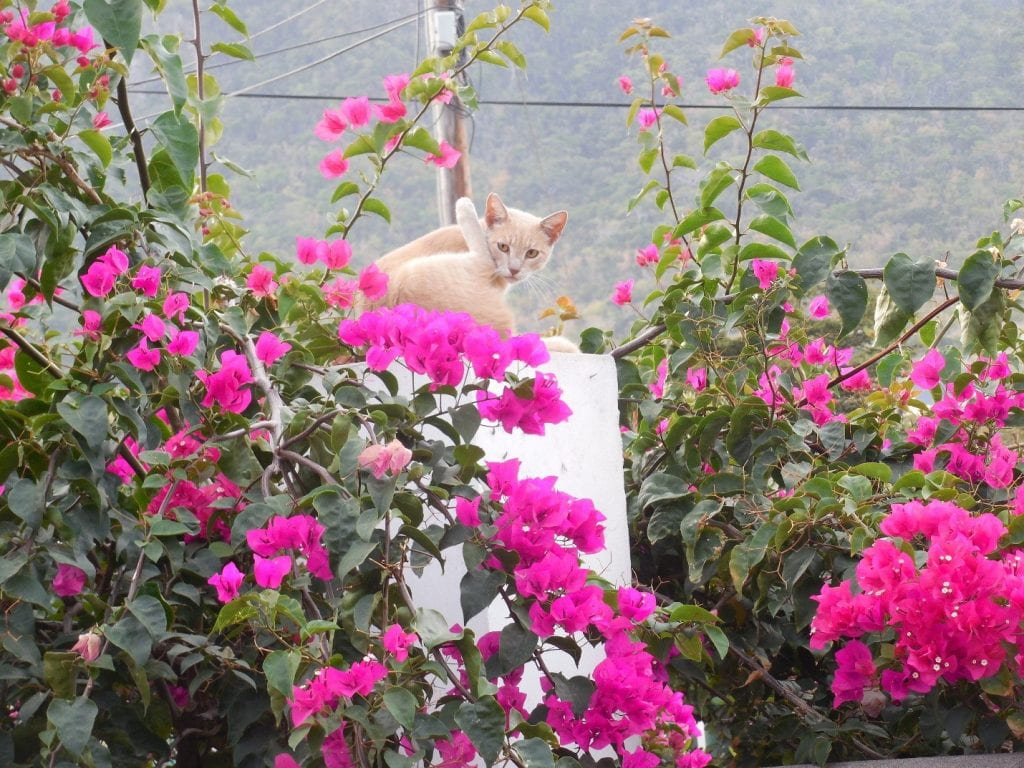
One of the many Marks.
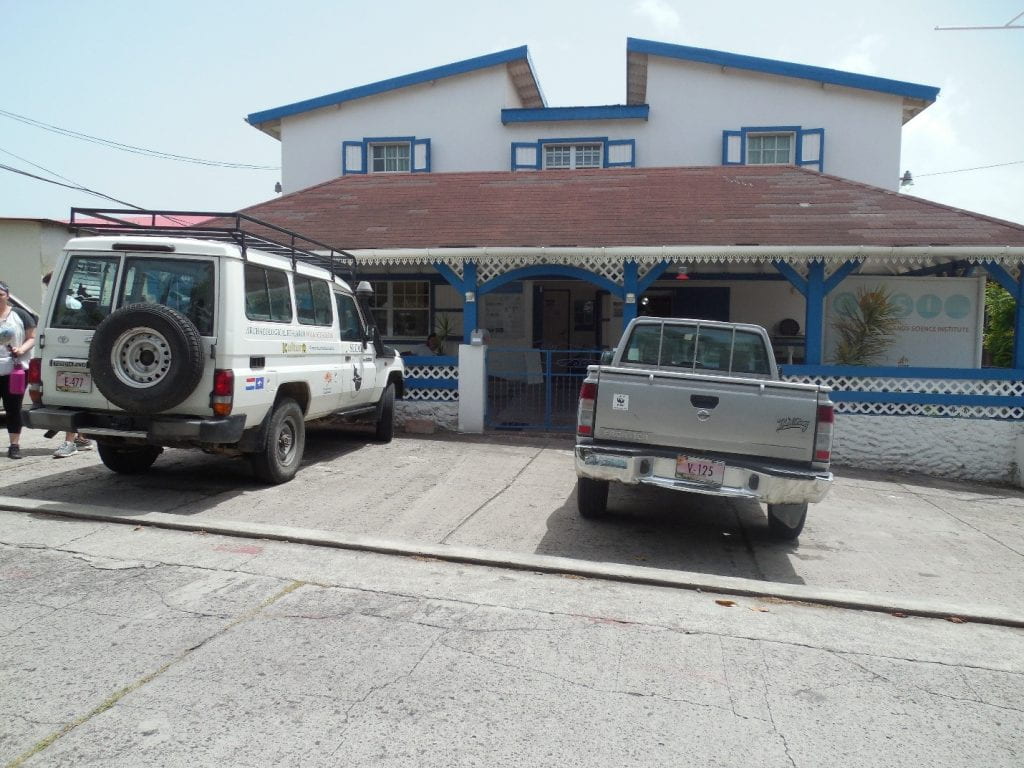
CNSI is where we lived during our time on Statia.
Before coming to Statia, I was a bit prepared for the workplace thanks to my grandparents and a gentleman from my church who all lived and let me work on their farms. Fieldwork is blissfully dirty; it also smells immensely better than pig and cow farms. At the site, the 10 of us divided; half of us worked with the burial sites and the other half, the group I was in, excavated near Fort Amsterdam. Over three weeks, we dug 11 units. For each unit, a square measuring 1m x 1m was established with nails placed in the unit’s corners and string outlining the dimensions. After the nails were placed and the string was set, the unit needed to be cleared of roots, rocks, foliage, and other debris. When the ground was exposed, measurements were taken, a form was labeled, and a plan to dig was started. For the first units, level 1 was 20 cm deep so Gabby and I dug until the ground was level at 20 cm. The proceeding levels were dug at 10 cm each. By troweling the dirt like a sideways shovel, artifacts, tarantulas, crabs, and dirt were unearthed. The dirt was transported from the unit’s floor to a bucket by a dust pan. From the bucket, the contents were poured into a ⅛ inch screen to be shaken and sifted. Anything interesting was placed in brown paper bags with labels detailing the unit’s information. If you repeat that process for 11 units and 62 lots (each level is a new lot), you get four gallons of sweat, 2,105 ceramic sherds, 5 farmer’s tans, and 4 research projects.
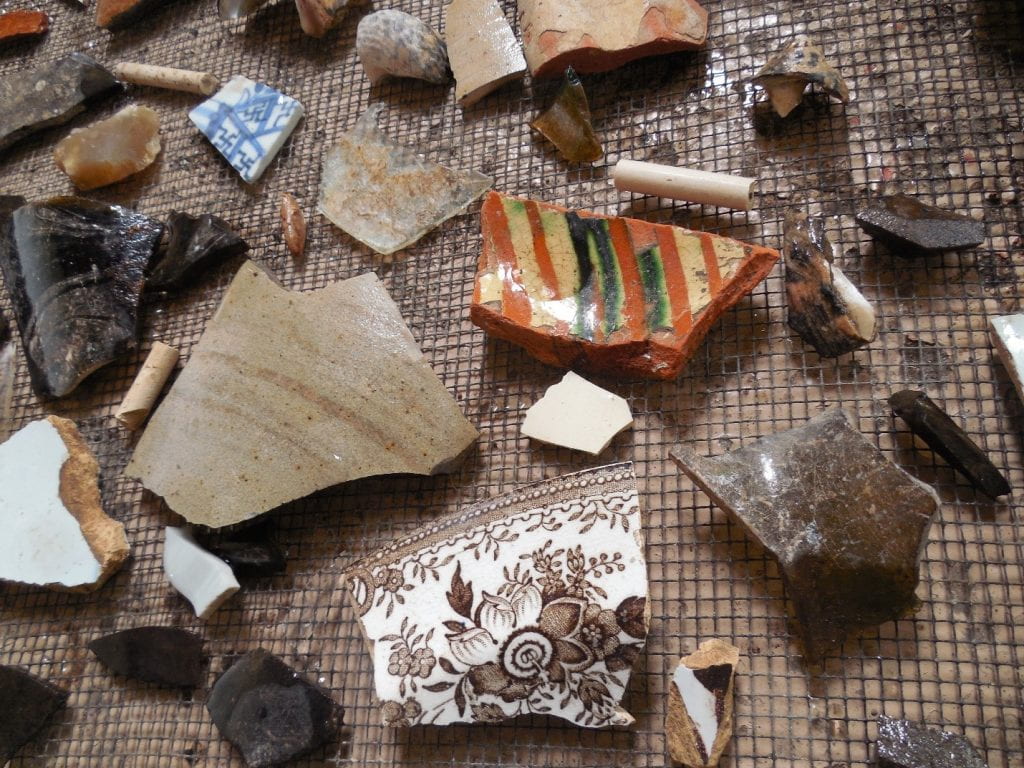
Close up of some of our artifacts.
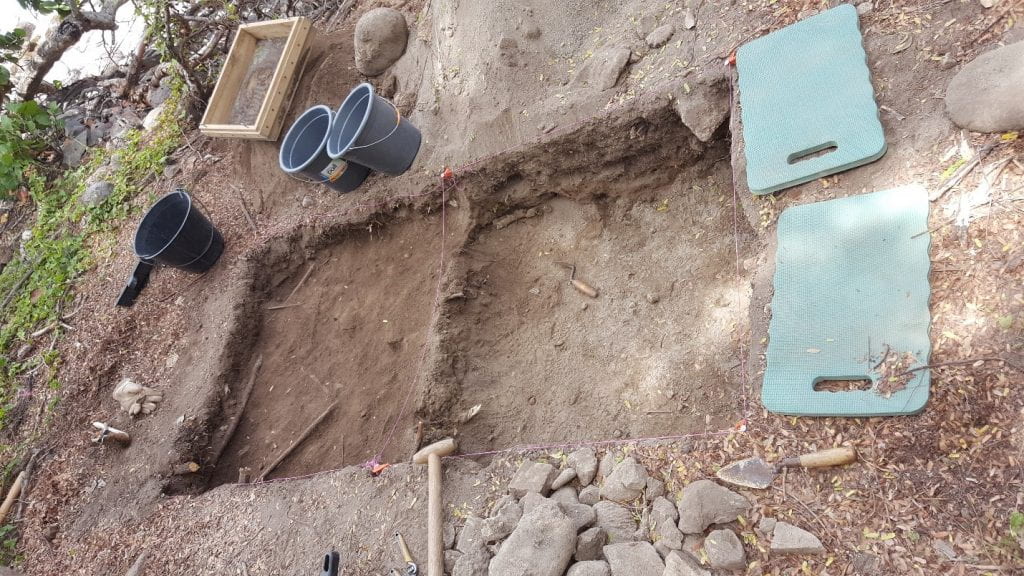
This is an example of our units.
For my research project, I am collaborating with my colleague Gabriela Gutierrez on a comparative ceramic analysis. Even though Gabriela is my partner, all five of these women have helped with this project since they all dug up ceramics alongside me. My arms and I are thankful for all the work they did because I genuinely could not do this alone. My partner and I are interested in the ceramic origin variety found on Statia. Lab work at Texas State was more extensive than I had anticipated. Even though our group isn’t working with the metal, animal bones, and glass from Fort Amsterdam we sorted it for future researchers or curators. Sorting and rebagging the materials took a decent chunk of time. Then we needed to learn how to tell the ceramics apart by looking at them. At first for me, telling the ceramics apart was like naming cat breeds; I only knew 2. However after Dr. Ahlman educated us on what to look for, I have improved. By comparing our sherds with a heavily British influenced island near Statia, we saw how globalization reached Statia since the ceramics come from a variety of places like England, Holland, China, and France. Before this summer, I had never heard of Statia and I had never taken an archeology class. Now Statia is like my summer home I can’t afford to visit regularly and I’m now a novice in the sport of archeology. One nugget of trivia I learned was that Statia was the first to recognize the United States as an independent nation. Little details like that remind me how connected everything can be. Statia is a beautiful island with an expanding history that I’m thankful I got the chance to experience.
